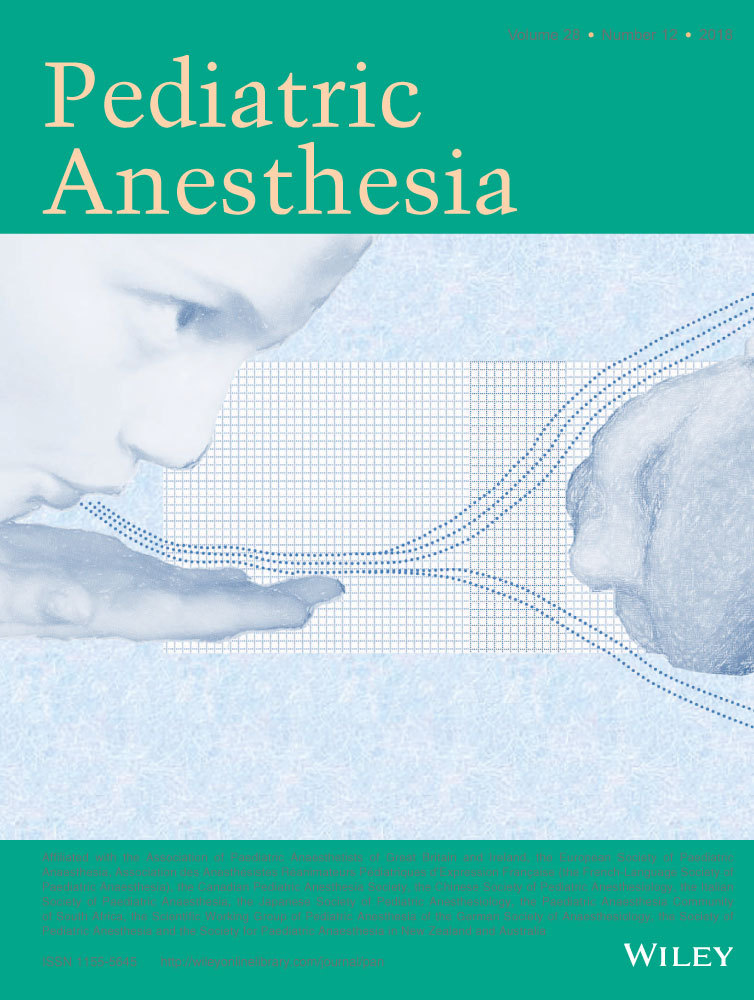The power of N-PASS, aEEG, and BIS in detecting different levels of sedation in neonates: A preliminary study
Funding information
This study was partially founded by the Janssen-Cilag Award “Nachwuchs Förderpreis Schmerz”.
Summary
Background
Sedatives are essential drugs in every intensive care unit in order to ensure the patient's optimal level of comfort. Avoiding conditions of over- and under-sedation is a challenge in a neonatal intensive care setting. Drug administration could be optimized by the concomitant use of objective methods to assess the level of sedation.
Aims
We aimed to look at the ability of different methods (Neonatal Pain, Agitation and Sedation Scale, amplitude-integrated Electroencephalogram, and Bispectral Index), and their combination, in detecting different level of sedation.
Methods
Twenty-seven neonates among whom 17 were receiving sedatives with or without opiate analgesics were monitored using the Neonatal Pain, Agitation and Sedation Scale, the amplitude-integrated Electroencephalogram, and the Bispectral Index. According to the expert opinion of two trained neonatologists, patients were categorized into three groups: no, light, and deep sedation. Four hours of simultaneous assessment of the Neonatal Pain, Agitation and Sedation Scale scores, Burdjalov scores (to summarize the amplitude-integrated Electroencephalogram trace), and Bispectral Index values were considered for the comparative analysis across these groups.
Results
All three methods could differentiate patients who were not sedated from those who were deeply sedated: median score 12 and 9, respectively, (95% CI of difference = 1.99-5.99, P = 0.001) for the amplitude-integrated Electroencephalogram Burdjalov score; median 1 and −5, respectively, (95% CI of difference = 2.99-8.00, P = 0.001) for the Neonatal Pain, Agitation and Sedation Scale; and median 48 and 37, respectively, (CI of difference = 1.77-22.00, P = 0.043) for the Bispectral Index. However none of them, used alone, was able to differentiate light and deep sedation: median score 10 and 9, respectively, for the amplitude-integrated Electroencephalogram Burdjalov score; median −2 and −5, respectively, for the Neonatal Pain, Agitation and Sedation Scale; and median 48 and 37, respectively, for the Bispectral Index. Only the amplitude-integrated Electroencephalogram and the Neonatal Pain, Agitation and Sedation Scale were able to differentiate between the conditions of no sedation and light sedation. Also, according to the area under the curves values, the combination of the Neonatal Pain, Agitation and Sedation Scale with the Burdjalov score derived from the amplitude-integrated Electroencephalogram showed the best accuracy in differentiating light and deep sedation.
Conclusion
While none of the three methods alone was able to precisely differentiate between different levels of sedation, we suggest that using a combination of amplitude-integrated Electroencephalogram and Neonatal Pain, Agitation and Sedation Scale can be useful to distinguish between light and deep sedation in neonatal patients.
CONFLICT OF INTEREST
The authors have no conflicts of interest to disclose.




